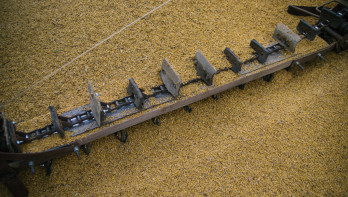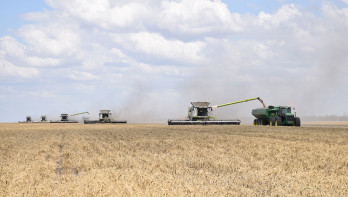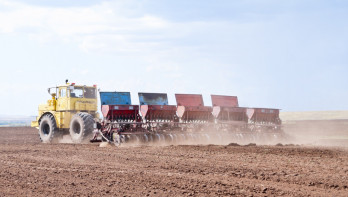Analysis Grains
Russian wheat harvest falls below five-year average
Lower yield forecasts for wheat in Russia and Ukraine are not really affecting the market. Argus predicts a wheat harvest of 4.44 tons per hectare for Ukraine and Mars expects 2.85 tons per hectare in Russia. Especially the latter is interesting, because if that is correct, the yield will fall well below the five-year average. Argentina exported more grain last month compared to June 2023. However, there is little enthusiasm among exporters. Brazil plans to expand wheat cultivation and become self-sufficient.
The September contract for wheat on the Matif closed €3.25 lower at €227 per ton yesterday. Wheat also took a step back on the CBoT yesterday, dropping 1.4% to $5.61½ per bushel. Corn closed 0.9% higher at $4.02 per bushel. Soybeans also ended in the green, up 0.5%. This led soybeans to close at $11.65 per bushel.
Market agency Argus has reduced the yield expectation for wheat in Ukraine by 2.2 million tons to 20.3 million tons. This is partly due to lower hectare yields and partly due to a smaller acreage. The average yield is estimated at 4.44 tons per hectare, compared to the record yield of 4.79 tons per hectare last season. A relatively late sowing date, large temperature fluctuations in April, unusually late frost in May, and a dry and warm June are costing Ukrainian growers according to Argus.
The JRC, the scientific bureau of the European Commission, provided an update on wheat in Russia yesterday. The total Russian grain harvest is estimated at 82.5 million tons. Last season, 93.6 million tons of wheat were harvested in Russia. This season, Russia is heading for a 12% smaller harvest compared to the previous season. Compared to the five-year average, the harvest is 5% smaller. The hectare yield, according to the JRC, is 2.85 tons per hectare. Last season it was 3.17 tons per hectare, and the five-year average stands at 3.02 tons per hectare.
Concerns despite strong export figures
Argentina exported nearly $2 billion worth of grains and oilseeds in June, as announced by Ciara Cec, the grain exporters' association yesterday. Compared to June last year, the export value was a quarter higher last month. However, Ciara Cec is far from enthusiastic about the export. Compared to May, exports have decreased by 24%. "Grain exporters continue to face low utilization rates, just like soybean processors, and have permanently negative margins," writes Ciara Cec. According to the association, almost 70% of the available capacity is not being used. Grain exports are of great importance to the Argentine state as they are the largest source of US dollars. These hard currencies are essential to meet the obligations related to the towering state debt.
Wheat in the tropics
Bearish news for the wheat market came yesterday in a report from the US agricultural attaché in Brazil. Brazil is currently a net importer of wheat, but the Brazilian government plans to become self-sufficient in that area. The country consumes over 12 million tons of wheat while producing about 9.5 million tons. To boost production, Brazil aims to expand cultivation on 4 million hectares of neglected and poor land. Wheat is not a crop that thrives in a tropical climate, and to address that issue, Brazil is focusing on 'tropical wheat varieties'.
Farmers in central Brazil see potential in wheat as a second crop after soybeans. A second crop provides additional income, helps suppress weeds during periods when there is no soybeans, corn, or cotton (the main crops in the region), and is beneficial for soil moisture. However, there are still hurdles to overcome for wheat cultivation to be successful. The soil in the area is generally low in phosphate and potassium, and wheat is particularly sensitive to phosphate deficiency. The fungus Pyricularia grisea thrives in the high temperature and humidity, causing significant yield losses and is challenging to control.




